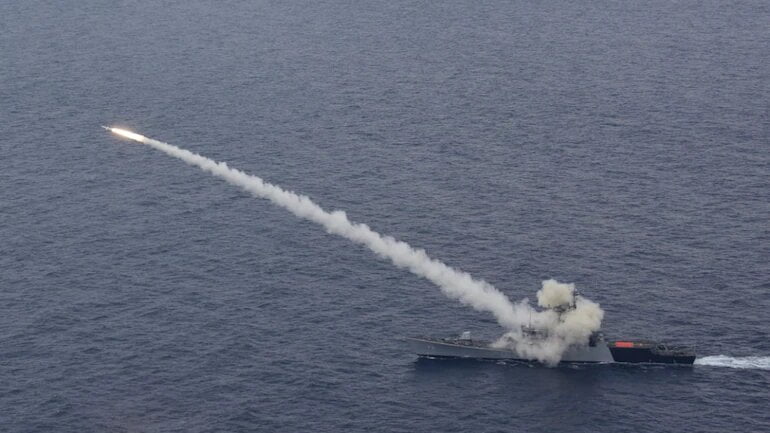Indian Navy Wants To Develop A New “Glidefire” Missile

- The Rafael Sea Breaker, which has a larger range and a covert terminal phase, may be comparable to the Glidefire SSM in terms of performance.
- Long Range Land Attack Cruise Missile (LRLACM), a subsonic hypersonic anti-ship missile, and BrahMos enhancements with longer ranges are some of the other Indian naval SSM programmes.
The specifications for a new ship-launched surface-to-surface missile have been revealed by the Indian Navy (SSM). The glidefire SSM missile will be created in accordance with India’s Defence Acquisition Procedure (DAP) 2020’s Make-II category. This group includes privately funded project development that is not supported by the government.
When Acceptance In Principle (AIP) was granted on September 16, 2021, the project first came to light. On April 6, 2022, a new AIP was granted as the project conducted a feasibility study. After that, a project brief that included the Glidefire SSM’s preliminary requirements was published in May.
A “lightweight, modular, and cost-effective” missile with anti-ship and land strike capabilities was requested for to be developed. The missile would be fired from both a universal vertical launcher module now installed on Indian warships and a modular, expandable launcher. Additionally, DRDO is creating a universal vertical launcher that can be used to launch all homegrown missiles from Indian Navy ships.
“Hybrid propulsion” and “unique controlled surfaces” would be used by Glidefire SSM to engage enemy targets precisely. Fire control systems (FCS), launchers, and other interface hardware are examples of associated systems. A total of 115 missiles and two prototypes are needed for the Indian Navy. There were no details about the missile’s performance provided in this indicative document.
However, further information on Glidefire SSM was given in a questionnaire paper that was published in July. The hybrid propulsion of Glidefire is designed to reach a terminal speed of at least 2000 kts (Mach 3). At “extended ranges of up to 180 kilometres,” it could engage hostile targets. Each year, 20 missiles are to be produced.
Glidefire is probably being considered as a ship-launched, medium-range anti-ship missile, a type of missile whose importation will be prohibited beginning in December 2027. Additionally, this would be a replacement for the Navy’s present Kh-35 “Uran” missiles. In the meantime, work is being done to enhance the FCS for the Uran SSM, which was introduced for the first time in 1997. The Rafael Sea Breaker, which has a larger range and a covert terminal phase, may be comparable to the Glidefire SSM in terms of performance.
By 2027, many active Indian anti-ship missile projects, including a Submarine Launched Cruise Missile (SLCM) and Naval Anti-Ship Missile – Short and Medium Range, would also be produced. Long Range Land Attack Cruise Missile (LRLACM), a subsonic hypersonic anti-ship missile, and BrahMos enhancements with longer ranges are some of the other Indian naval SSM programmes.







Facebook Comments